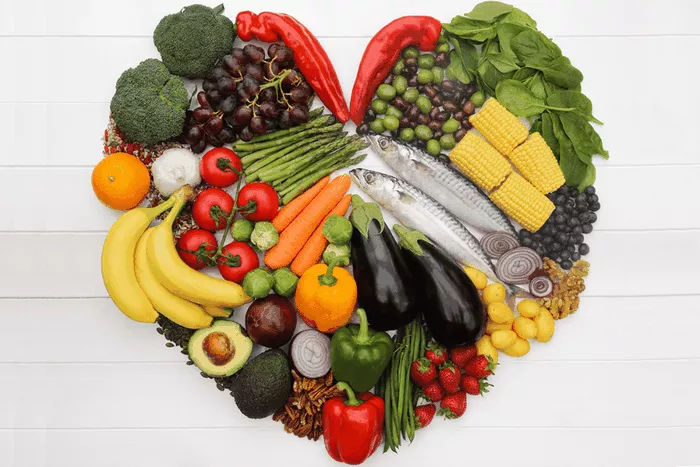High blood pressure, or hypertension, is a common condition that can lead to serious health problems if left unmanaged.
Diet plays a crucial role in managing blood pressure, and incorporating specific vegetables into your meals can significantly contribute to lowering your blood pressure levels. This article explores various vegetables known for their blood pressure-lowering properties and explains how they can be effectively included in your diet.
Leafy Greens
Leafy greens are some of the best vegetables for lowering blood pressure due to their high potassium content. Potassium helps your kidneys eliminate more sodium through urine, which can help reduce blood pressure.
See Also: what can i eat or drink to lower blood pressure
Spinach
Spinach is a nutrient-dense leafy green that is high in potassium, folate, and magnesium. These nutrients are essential for maintaining healthy blood pressure levels. Spinach can be easily added to salads, smoothies, and cooked dishes.
Kale
Kale is another excellent leafy green rich in potassium and magnesium. It also contains antioxidants that help reduce oxidative stress, which can contribute to high blood pressure. Kale can be used in salads, soups, and as a healthy snack when baked into chips.
See Also: what causes pulmonary hypertension in infants
Swiss Chard
Swiss chard is high in potassium and magnesium, making it beneficial for blood pressure management. It can be sautéed, added to soups, or used in salads to enhance your diet.
Cruciferous Vegetables
Cruciferous vegetables contain compounds that can help relax blood vessels and improve blood flow, thus aiding in lowering blood pressure.
Broccoli
Broccoli is packed with potassium, magnesium, and calcium, all of which are known to regulate blood pressure.
Additionally, it contains compounds like sulforaphane, which have antioxidant and anti-inflammatory properties. Broccoli can be steamed, roasted, or added to stir-fries.
Cauliflower
Cauliflower is a versatile vegetable that can be used as a low-carb substitute for grains and legumes. It contains potassium and magnesium, which help regulate blood pressure. Cauliflower can be mashed, roasted, or used in place of rice.
Brussels Sprouts
Brussels sprouts are rich in potassium and fiber, both of which contribute to lowering blood pressure. They also contain antioxidants that support cardiovascular health. Brussels sprouts can be roasted, steamed, or added to salads.
Root Vegetables
Root vegetables are not only nutritious but also beneficial for maintaining healthy blood pressure levels.
Beets
Beets are particularly effective in lowering blood pressure due to their high nitrate content. Nitrates help dilate blood vessels, improving blood flow and reducing pressure. Beets can be eaten raw, roasted, or juiced.
Sweet Potatoes
Sweet potatoes are rich in potassium and magnesium, which are essential for blood pressure regulation. They also contain fiber, which supports overall cardiovascular health. Sweet potatoes can be baked, mashed, or used in soups.
Carrots
Carrots are a good source of potassium and antioxidants, which help maintain healthy blood pressure levels. They can be eaten raw, roasted, or added to a variety of dishes for added nutrition.
Allium Vegetables
Allium vegetables, such as garlic and onions, are known for their blood pressure-lowering properties.
Garlic
Garlic contains allicin, a compound that has been shown to reduce blood pressure by promoting vasodilation. Regular consumption of garlic can help lower systolic and diastolic blood pressure. Garlic can be added to a variety of dishes, used in sauces, or taken as a supplement.
Onions
Onions contain quercetin, an antioxidant that can help reduce blood pressure. Including onions in your diet can be beneficial for cardiovascular health. Onions can be eaten raw, cooked, or used as a flavor enhancer in various recipes.
Other Beneficial Vegetables
Tomatoes
Tomatoes are high in potassium and contain lycopene, an antioxidant that has been linked to lower blood pressure levels.
Eating tomatoes regularly can help manage blood pressure. They can be eaten raw, cooked, or used in sauces and soups.
Celery
Celery contains phthalides, which are compounds that can help relax blood vessels and lower blood pressure. Including celery in your diet can be as simple as adding it to salads, soups, or as a healthy snack with dip.
Cucumber
Cucumbers are hydrating and contain potassium and magnesium, which support blood pressure regulation. They can be eaten raw in salads, added to smoothies, or used as a refreshing snack.
Bell Peppers
Bell peppers are rich in potassium, fiber, and vitamins A and C, all of which contribute to heart health and blood pressure management. They can be eaten raw, roasted, or added to a variety of dishes.
Incorporating Vegetables into Your Diet
To maximize the blood pressure-lowering benefits of these vegetables, it’s important to incorporate them into your diet in a variety of ways. Here are some tips:
Salads: Add a mix of leafy greens, bell peppers, cucumbers, and other raw vegetables to your salads.
Smoothies: Blend spinach, kale, or other leafy greens with fruits and a liquid base for a nutrient-packed smoothie.
Roasting: Roast root vegetables like beets, sweet potatoes, and carrots for a flavorful and healthy side dish.
Soups and Stews: Incorporate a variety of vegetables into soups and stews for a hearty, nutrient-dense meal.
Snacks: Use raw vegetables like carrots, celery, and bell peppers as healthy snacks with hummus or other dips.
Stir-Fries: Add broccoli, Brussels sprouts, and other cruciferous vegetables to stir-fries for a quick and easy meal.
Conclution
By making these vegetables a regular part of your diet, you can take significant steps toward managing your blood pressure and improving your overall cardiovascular health. Always consult with a healthcare professional before making significant changes to your diet, especially if you have existing health conditions or are on medication for high blood pressure.


